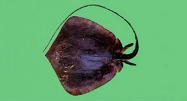http://www.fishbase.org/Summary/speciesSummary.php?genusname=Dasyatis&speciesname=navarrae ---> http://52.67.158.155/Summary/speciesSummary.php?genusname=Dasyatis&speciesname=navarrae
http://52.67.158.155/Summary/speciesSummary.php?genusname=Dasyatis&speciesname=navarrae ---> https://fishbase.net.br/Summary/speciesSummary.php?genusname=Dasyatis&speciesname=navarrae
https://fishbase.net.br/Summary/speciesSummary.php?genusname=Dasyatis&speciesname=navarrae ---> https://fishbase.net.br/summary/Dasyatis-navarrae.html
Hemitrygon navarrae, Blackish stingray

You can
sponsor
this page
Common name (e.g. trout)
Genus + Species (e.g. Gadus morhua)
-

-
About this page
-
Languages
-
User feedbacks
-
Citation
-
Uploads
-
Related species
-


 Blackish stingray
Upload your
photos
and
videos
Blackish stingray
Upload your
photos
and
videos
Pictures
|
Google image
 Hemitrygon navarrae
Hemitrygon navarrae
Picture by
Shao, K.T.
Elasmobranchii (sharks and rays) >
Myliobatiformes
(Stingrays) >
Dasyatidae
(Stingrays) > Dasyatinae
Etymology: More on author:
Steindachner
.
Environment: milieu / climate zone / depth range / distribution range
Ecology
Marine; demersal. Subtropical; 31°N - 7°N, 103°E - 123°E (Ref.
114953
)
Northwest Pacific: Shanghai, China to Cambodia.
Size / Weight / Age
Maturity: L
m
?
range ? - 32 cm
Max length : 32.0 cm WD male/unsexed; (Ref.
114953
)
A poorly known species; attains at least 32 cm DW, mature at this size (Ref.
114953
). Ovoviviparous (Ref.
50449
).
Life cycle and mating behavior
Maturity
|
Reproduction
|
Spawning
|
Eggs
|
Fecundity
|
Larvae
Exhibit ovoviparity (aplacental viviparity), with embryos feeding initially on yolk, then receiving additional nourishment from the mother by indirect absorption of uterine fluid enriched with mucus, fat or protein through specialised structures (Ref.
50449
). Distinct pairing with embrace (Ref.
205
).
Nishida, K. and K. Nakaya
, 1990. Taxonomy of the genus
Dasyatis
(Elasmobranchia, Dasyatidae) from the North Pacific. In: Pratt Jr., H. L., S. H. Gruber and T. Taniuchi (eds.): Elasmobranchs as living resources: advances in the biology, ecology, systematics, and the status of the fisheries. NOAA (National Oceanic and Atmospheric Administration) Tech. Rept. NMFS 90:327-346. (Ref.
7445
)
IUCN Red List Status (Ref.
130435
)
Vulnerable (VU)
(A2d); Date assessed:
29 April 2020
CITES
Not Evaluated
Not Evaluated
Threat to humans
Harmless
Human uses
FAO - Publication:
search
|
FishSource
|
More information
Countries
FAO areas
Ecosystems
Occurrences
Introductions
Stocks
Ecology
Diet
Food items
Food consumption
Ration
Common names
Synonyms
Metabolism
Predators
Ecotoxicology
Reproduction
Maturity
Spawning
Spawning aggregation
Fecundity
Eggs
Egg development
Age/Size
Growth
Length-weight
Length-length
Length-frequencies
Morphometrics
Morphology
Larvae
Larval dynamics
Recruitment
Abundance
BRUVS
References
Aquaculture
Aquaculture profile
Strains
Genetics
Electrophoreses
Heritability
Diseases
Processing
Nutrients
Mass conversion
Collaborators
Pictures
Stamps, Coins Misc.
Sounds
Ciguatera
Speed
Swim. type
Gill area
Otoliths
Brains
Vision
Tools
E-book
|
Field guide
|
Length-frequency wizard
|
Life-history tool
|
Point map
|
Classification Tree
|
Catch-MSY
|
Special reports
Check for Aquarium maintenance
|
Check for Species Fact Sheets
|
Check for Aquaculture Fact Sheets
Download XML
Summary page
|
Point data
|
Common names
|
Photos
Internet sources
AFORO (otoliths) |
Aquatic Commons
|
BHL
|
Cloffa
|
BOLDSystems
|
Websites from users
|
Check FishWatcher
|
CISTI
|
Catalog of Fishes
:
genus
,
species
|
DiscoverLife
|
ECOTOX
| FAO - Publication:
search
|
Faunafri
| Fishipedia |
Fishtrace
| GenBank:
genome
,
nucleotide
| GloBI |
Google Books
|
Google Scholar
|
Google
| IGFA World Record |
MitoFish
|
National databases
|
Otolith Atlas of Taiwan Fishes
|
PubMed
| Reef Life Survey | Socotra Atlas |
Tree of Life
| Wikipedia:
Go
,
Search
| World Records Freshwater Fishing |
Zoological Record
Estimates based on models
Phylogenetic diversity index (Ref.
82804
): PD
50
= 0.5010 [Uniqueness, from 0.5 = low to 2.0 = high].
Bayesian length-weight: a=0.00646 (0.00265 - 0.01571), b=3.06 (2.86 - 3.26), in cm total length, based on LWR estimates for this (Sub)family-body shape (Ref.
93245
).
Trophic level (Ref.
69278
): 3.7 ±0.5 se; based on size and trophs of closest relatives
Resilience (Ref.
120179
): Low, minimum population doubling time 4.5 - 14 years (Assuming fecundity<100).
Fishing Vulnerability (Ref.
59153
): Very high vulnerability (90 of 100).
Back to Search
Random Species
Back to Top
Accessed through:
Not available
FishBase mirror site :
Laguna, Philippines
Page last modified by :
mrius-barile
|